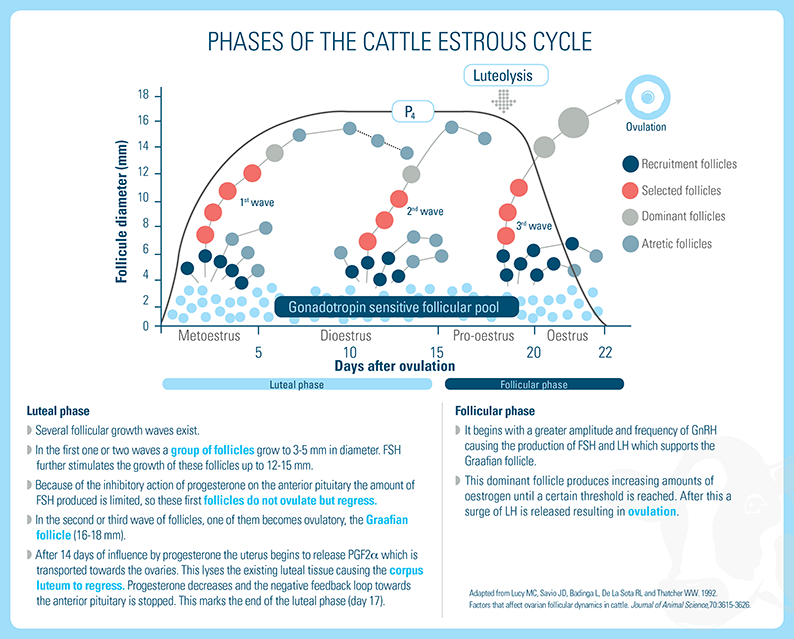

Estrus Cycle
The estrus cycle of a cow is generally about 21 days long but can span 17-24 days, beginning when the cow reaches its peak estrogen secretion and is “in estrus,” which can last from 6 to 24 hours. Ovulation generally occurs 24 to 32 hours after the beginning of estrus and marks the beginning of the luteal phase. After ovulation, germ cells mature into follicles containing FSH receptors in a process called “oogenesis,” where they grow in follicular waves.

Estrus (day 0 of the cycle) lasts on average 4-24 hours.
- During estrus, the cow or heifer is receptive to a bull and stands for mating (standing heat).
- Ovulation takes place 30 hours after the onset of estrus and after behavioral signs have ceased.
- Restlessness
- Decreased milk production
- Standing to be mounted
- Presence of clear mucus
- Swelling and reddening of vulva
Metaestrus (day 2-4) starts when estrus ends.
- A corpus luteum (CL) from the ovulated follicle is formed.
- Progesterone (P4) levels in circulation begin to rise.
- P4 exerts a negative feedback on the GnRH neurons in the hypothalamus limiting the production of cattle estrogen.
Diestrus (day 5-17) is the period of maximum corpus luteum size and function.
- High levels of progesterone in circulation.
- At the end of diestrus, luteolysis of the corpus luteum begins because of PGF2α produced by the endometrium.
Proestrus (day 17-20) consists of ovarian follicles growing rapidly.
- The corpus luteum of the previous cycle regresses.
- Progesterone concentrations in circulation drop.
- The dominant follicle is selected and grows producing increasing amounts of estradiol.
- Mucosal layers of vagina and uterus multiply.

